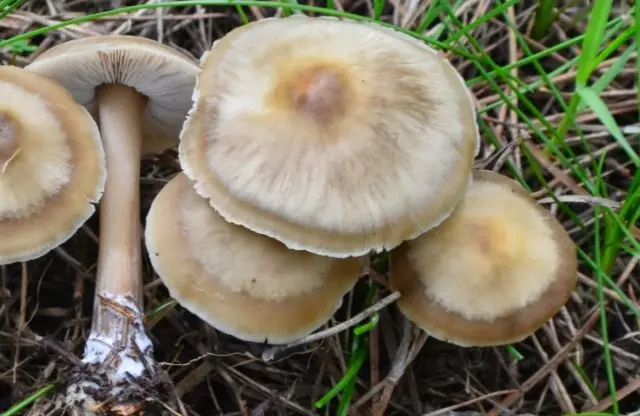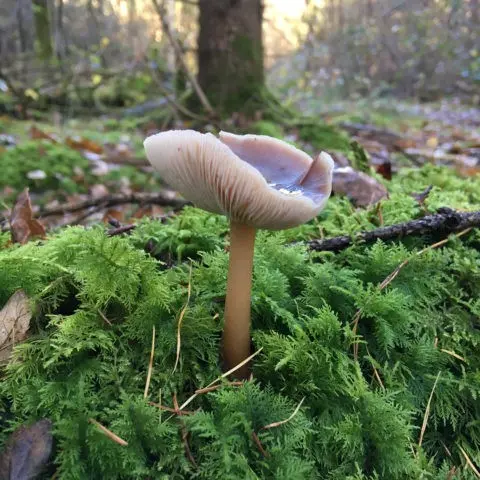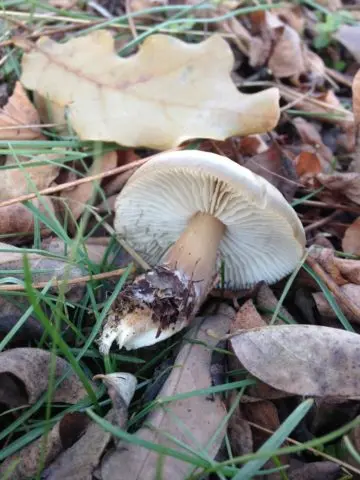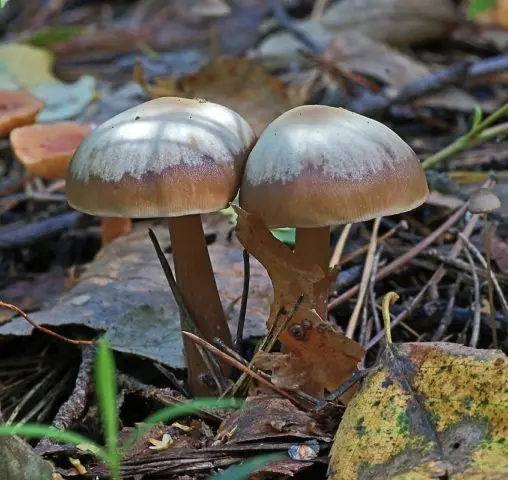Contents
Lamellar edible fungus of the Omphalote family, belongs to the 3rd group in terms of nutritional value. Collibia Azema is known by several names: Gymnopus Azema, Rhodocollybia Butyracea, Rhodocollybia Butyracea var. Asema.

Description of Collibia Azema
Gymnopus Azema is a saprophytic species that grows on rotten wood residues or a broken leaf layer, on moist acidic soils. The color of the fruit body is light gray with a greenish tinge, in an open sunny area it is silvery-ashy, light brown specimens are less common.

Cap Description
The hat does not happen in one tone, the convex central part is darker, more often with an ocher tint. Along the edge, a hygrophane band is defined in the form of a circle; in a humid environment it is more pronounced, in a dry environment it is weaker. May be completely absent.

Characteristics of the Collibia hat:
- at the beginning of growth, the shape is rounded with concave edges;
- in an older mushroom – prostrate, uneven edges raised upwards, diameter – 4-6 cm;
- the protective film is slippery, oily, regardless of air humidity;
- the plates are light with a slight gray tint, two types. Large ones are often located, firmly fixed in the lower part. Small ones occupy 1/3 of the length, are located along the edge, in adult specimens protrude beyond the borders of the fruiting body;
- grayish spore powder.
White pulp is dense, thin, fragile. With a pleasant smell and sweetish taste.
Description of the leg
The leg of collibium Azema grows up to 6-8 cm in length, diameter – 7 mm. The color is uniform, gray-yellow with a slight brown tint.

The color is always the same with the surface of the hat. The stem is wider at the base than at the top. The structure is fibrous, rigid, hollow.
Is the mushroom edible or not?
This type of collibia belongs to the group of edible mushrooms. Suitable for any processing method. The pulp is dense, with a pleasant taste, does not require special processing. Collibia is used for salting, pickling. Mushrooms are fried, included in assorted vegetables, and first courses are prepared.
Where to look for Collybia Azema
The species is distributed in the southern regions and the temperate climate zone. Grows in mixed forests, deciduous and coniferous. The main condition is moist acidic soil.
How to collect Collibia Azema
The species belongs to autumn mushrooms, the fruiting time is from August to the first half of October. In warm climates, the last specimens can be found in early November. The main growth begins after rains, when the temperature drops to +170 C. It grows under trees on a moss or coniferous pillow, rotten wood residues, stumps and bark, branches or rotten leaves.
Twins and their differences
Similar species include collibia oily. The closely related fungus is difficult to distinguish from Rhodocollybia Butyracea var. Asema.

The fruiting time of the twin is the same, the distribution area is the same. The species is classified as conditionally edible. A closer look shows that the double is larger, its fruiting body is darker.
Conclusion
Collibia Azema is an edible saprophytic mushroom. Fruiting in autumn, distributed from the south to European regions. It grows in forests of various types on the remains of wood and rotten leaf litter. The fruit body is universal in processing.









